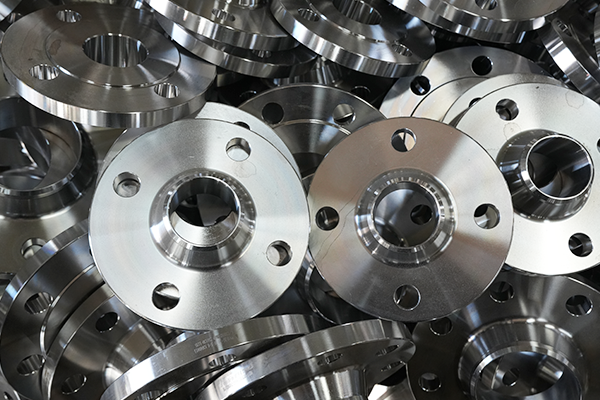NewsDetails
Global Standards for Flange Manufacturers: Guaranteeing Reliability and Cross-System Compatibility
author:Zhantong time:2025-10-19 17:53:03 Click:170
Across modern industrial pipelines—spanning oil, gas, petrochemical, and energy sectors—flanges act as critical connection points ensuring system integrity and leak-free performance.
With globalization driving large-scale engineering collaboration, maintaining standardized quality among Flange Manufacturers has become indispensable.
For project contractors and procurement managers, sourcing from a trusted China flange manufacturer with mass production capabilities ensures products that comply with worldwide quality and safety benchmarks.
1. Why Unified Standards Are Essential
Inconsistent dimensions, materials, or tolerances in flange production can result in mechanical failures, leaks, or costly downtime.
That’s why the world’s leading Flange Manufacturers adhere to internationally recognized standards, which define every technical aspect from pressure class to bolt configuration.
Major global standards include:
·ASME / ANSI – The American standard, defining flange dimensions, pressure ratings, and materials.
·EN / DIN – Widely applied in Europe, particularly for pipeline and power systems.
·JIS – Japan’s system, adopted in many Asian projects.
·GOST – Applied in Eastern Europe and CIS countries.
·ISO – Providing globally harmonized specifications across different markets.
When manufacturers produce according to these standards, flanges from different origins remain interchangeable, minimizing installation risks and ensuring cross-border compatibility.
2. Core Quality Criteria for Flange Manufacturing
An internationally qualified Flange Manufacturer must control every stage of production — from raw material testing to final inspection — under strict quality frameworks.
a. Material Integrity
Only certified steels and alloys should be used.
Each heat number and batch requires an accompanying Material Test Report (MTR) to confirm chemical composition and mechanical properties.
This guarantees traceability from mill to finished flange.
b. Dimensional Precision
Tolerance control determines fit accuracy.
Every bore, bolt hole, and sealing face must match standard specifications such as ASME B16.5 or EN 1092-1.
Leading China flange manufacturers now utilize CNC machining and digital calipers to maintain micron-level precision.
c. Surface and Facing Quality
The type and roughness of flange faces directly affect gasket sealing.
Regular testing ensures consistent sealing under high-pressure and temperature fluctuations.
d. Mechanical and Pressure Testing
Hydrostatic, ultrasonic, and radiographic inspections validate strength and leak resistance.
High-end Chinese suppliers deploy automated inspection lines to ensure every flange passes testing before export.
3. Key International Certifications
To demonstrate technical competence, reliable Flange Manufacturers obtain global certifications such as:
·ISO 9001 – Quality management compliance
·PED 2014/68/EU – Pressure Equipment Directive for EU market access
·API 6A / 6B – Oilfield equipment qualification
·EN 10204 3.1/3.2 – Independent material verification
·CE Marking – European conformity documentation
These accreditations confirm that manufacturing, welding, and heat treatment processes are regularly audited and approved by international authorities.
4. China’s Role in the Global Flange Supply Chain
Over the past decade, China flange manufacturers have rapidly advanced in automation, material quality, and export standards.
Factories now employ robotic welding, intelligent machining centers, and in-line quality monitoring systems.
Advantages of choosing a China supplier with bulk supply capabilities include:
·Large-scale production meeting global project demands
·Competitive pricing due to integrated domestic steel supply chains
·Faster turnaround enabled by optimized logistics
·Custom manufacturing for special-grade or non-standard flanges
These strengths make Chinese manufacturers reliable partners for EPC contractors and global distributors seeking consistent quality and high-volume output.
5. Compatibility Across Global Systems
A major challenge for multinational projects lies in the integration of components sourced from different regions.
Pipes might come from Germany, valves from Korea, and flanges from China — all requiring perfect alignment.
A well-qualified Flange Manufacturer ensures compatibility by providing:
·3D CAD drawings with dimensional tolerance data
·Verified material certificates and pressure test results
·Marking systems for traceability (heat numbers, batch codes, etc.)
·Packaging and labeling following international shipping standards
Such transparency simplifies installation, enhances safety, and prevents costly site adjustments.
6. Evolving Trends in Flange Production
The next generation of Flange Manufacturing is being shaped by digital quality control and sustainable production practices:
·AI-based defect detection systems identify surface irregularities early.
·3D scanning improves geometric verification accuracy.
·Eco-friendly coatings enhance corrosion resistance while reducing VOC emissions.
·Blockchain traceability ensures end-to-end visibility for clients and inspectors.
Forward-looking China flange manufacturers are integrating these technologies to meet the increasing demands for greener, smarter, and more transparent manufacturing.
Conclusion
Adhering to international standards isn’t just a certification requirement — it’s the foundation of trust and safety in global industrial projects.
When choosing a Flange Manufacturer, prioritize one that guarantees compliance with ASME, EN, and ISO systems while offering China-based bulk manufacturing capacity.
By working with such certified suppliers, engineering firms and distributors gain access to durable, globally compatible flanges that safeguard operations and reduce long-term maintenance risks.
In a competitive global market, partnering with a reliable China flange manufacturer ensures every connection—literally and figuratively—remains strong, safe, and standardized.
References
GB/T 7714:Vignat F, Villeneuve F. A numerical approach for 3D manufacturing tolerances synthesis[J]. arXiv preprint arXiv:0711.2116, 2007.
MLA:Vignat, Frédéric, and François Villeneuve. "A numerical approach for 3D manufacturing tolerances synthesis." arXiv preprint arXiv:0711.2116 (2007).
APA:Vignat, F., & Villeneuve, F. (2007). A numerical approach for 3D manufacturing tolerances synthesis. arXiv preprint arXiv:0711.2116.
 Recommended Products
Recommended Products
 Contact us
Contact us
—— Contact:Manager
—— Tel:+86 15231788966
—— Email:info@zhantongpipe.com
—— Url:https://www.zhantongpipe.com
—— Address:Mengcun Hui Autonomous County, Cangzhou City, Hebei Province









